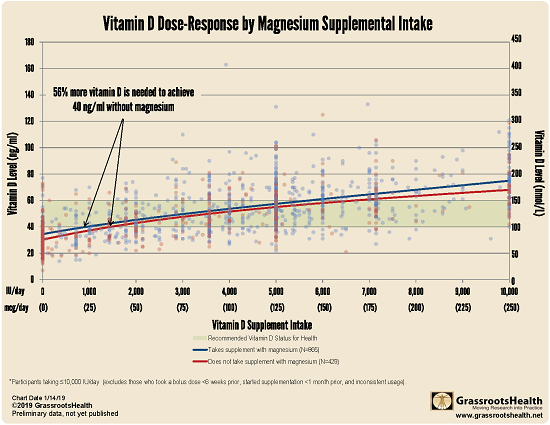Published on January 15, 2019
In a previous blog we mentioned that a lack of key vitamin D co-nutrients can keep vitamin D levels from rising. Today we will dive further into what co-nutrients are and how co-nutrients are important for vitamin D levels.
What are co-nutrients?
Co-nutrients are nutrients that work together for some process. If one co-nutrient is limited, either missing or not plentiful enough, then the process might also be limited. For example, your body needs magnesium for vitamin D metabolism; without sufficient magnesium, the amount of vitamin D that can be metabolized and used by your body is limited.
What does our data show?
Using your data from the D*action questionnaire, we plotted every participant’s supplemental vitamin D intake (dose) and blood level (response) and determined the average trends for participants who reported taking a supplement with magnesium and those who did not.
The dose-response chart above shows that on average, those taking a supplement with magnesium have a higher vitamin D level for any given vitamin D intake amount than those not taking magnesium. Specifically, 56% more supplemental vitamin D is needed to achieve 40 ng/ml for those not taking magnesium compared to those who are.
How do I know if it’s working for me?
To help you track your supplement use and nutrient levels, GrassrootsHealth has created an online tracking system called myData-myAnswers. For each specific supplement, you can track what days you take it, what time of the day, if it was with a meal, and many other details. This will help you know your true supplemental intake for both vitamin D and other nutrients and how these intakes impact your vitamin D levels. Check it out today!









